 Last year at the special species symposium, I had the pleasure of hearing Dr. Bill Swanson speak about his work at CREW, the Cincinnati Zoo and Botanical Garden’s Center for Conservation and Research of Endangered Wildlife. CREW applies assisted reproductive technologies for the conservation and propagation of wild animals, especially rhinos, bears and felids. One of their major priorities is to collect and cryopreserve sperm from all the males within zoo-housed populations. The frozen sperm is stored in CREW’s CryoBioBank, which can provide samples for future artificial insemination procedures and serve as a safeguard against the loss of genetic diversity.
Last year at the special species symposium, I had the pleasure of hearing Dr. Bill Swanson speak about his work at CREW, the Cincinnati Zoo and Botanical Garden’s Center for Conservation and Research of Endangered Wildlife. CREW applies assisted reproductive technologies for the conservation and propagation of wild animals, especially rhinos, bears and felids. One of their major priorities is to collect and cryopreserve sperm from all the males within zoo-housed populations. The frozen sperm is stored in CREW’s CryoBioBank, which can provide samples for future artificial insemination procedures and serve as a safeguard against the loss of genetic diversity.
At the symposium, Dr. Swanson discussed the artificial insemination surgeries and new technologies that were being used in the veterinary field for conservation and research purposes, and I truly fell in love with the idea of wildlife theriogenology. Upon completion of the symposium, I reached out to Dr. Swanson, who then put me in contact with Dr. Lindsey Vasandt, the Director of the Imperiled Cat Signature Program. She was quick to respond, and suggested a zoom meeting, one in which we ended up discussing my career interests, plans for the future, etc. Not only was she very reassuring when it came to my newer interest in reproduction, but also gave quite a bit of advice and ideas for my future career path. During our talk, she mentioned that CREW frequently hosts student externs that are interested in wildlife theriogenology, and I expressed my interest in doing such during a break in vet school. Once we lined up our schedules, we decided on a two-week externship during winter break.

While externing at CREW, I had the opportunity to travel to the Chattanooga Zoo, TN and Toledo Zoo, OH, where three snow leopards and one jaguar were scheduled to be anesthetized for their annual physical examinations and we opportunistically decided to perform reproductive exams (and semen collection in the males). In the female snow leopard, we performed a reproductive exam along with an endoscopy to investigate a potential muco/hydrometra that had previously been found on diagnostic imaging. In the two male snow leopards and one male jaguar, we performed reproductive examinations as well as semen collection via electroejaculation. I had the amazing opportunity to take an active part in the process by helping with the examinations as well as running the machine for the electroejaculations. I then aided in the process of semen freezing via cryopreservation for storage in the “frozen zoo” held at the CREW facility, working on a step-by-step basis set by protocols for ensuring proper additive amounts and hopefully, freezing success. Once we returned to the CREW facility, I helped in the preparation of a genetic study in their domestic cat population by performing castrations, assisting with semen collections via electroejaculation and urinary catheter placement, and blood work on four males. My first ever neuters!

My favorite memory would have to be my first semen collection. Not only was it on a jaguar, which is a truly remarkable species, but we collected over a billion sperm total from him (that is quite a lot, especially for a feline). This is something I will never forget, no matter how silly it might sound. Knowing how important it is for preserving genetics for generations to come, it felt so good to know that we collected and stored so many chances for future jaguar conceptions. This is huge in the field of conservation, and who doesn’t love the idea of baby jaguars!
I went into the externship most excited to work with snow leopards, a species that I have always idolized and dreamed of working with. It was so rewarding to not only see these animals up close and personal, but contributing to their future successes in reproduction made me feel like I was truly making a difference. I have to say they were a lot fluffier then they even look, and I was in complete awe of their huge tail, which was both long and thick with fur. This experience truly made me fall in love snow leopards, making their way towards the top of my list when it comes to favorite animals. I was so lucky to get the chance to work with them, and have since heard and seen so many success stories in snow leopard breeding across the country, making my time with them just that much more memorable.
During this experience, I truly found a path in veterinary medicine that I am confident in and proud of pursuing. I learned so much about myself, my aspirations, and the veterinary community, and I feel like I gained such a higher appreciation for conservation medicine and all of the factors that go into to ensuring the safety of animals for generations to come. I also found such a great mentor in Dr. Vansandt, and she is someone I feel as though I can always turn to for career and professional advice, questions, and concerns. I look forward to staying in contact with her for the rest of my veterinary school experience and beyond.
 I have always been interested in pursuing a career in zoological medicine, a field that I find intriguing and necessary for ensuring the protection of wildlife and educating people around the world. However, my interest in reproductive medicine/theriogenology has grown over the years, especially considering its impact on conservation. Growing up, conservation was always the number one factor I had on my mind when it came to my career, and knowing that I can tie my passion for both zoological medicine and reproduction brings me nothing but excitement. This externship allowed me to explore what a career in this field can look like, and how I can tie these two loves together in a practical and achievable way. My time at CREW also allowed me to grow my understanding of the impact and importance of research on conservation, highlighting how much I would like to incorporate it into my future career.
I have always been interested in pursuing a career in zoological medicine, a field that I find intriguing and necessary for ensuring the protection of wildlife and educating people around the world. However, my interest in reproductive medicine/theriogenology has grown over the years, especially considering its impact on conservation. Growing up, conservation was always the number one factor I had on my mind when it came to my career, and knowing that I can tie my passion for both zoological medicine and reproduction brings me nothing but excitement. This externship allowed me to explore what a career in this field can look like, and how I can tie these two loves together in a practical and achievable way. My time at CREW also allowed me to grow my understanding of the impact and importance of research on conservation, highlighting how much I would like to incorporate it into my future career.

My best recommendations to students interested in pursuing a career in the wildlife/zoo field would be to take every opportunity you get and run with it. Whether it aligns with your career path or not, you never know how much an experience can influence your clinical skills, professionalism, or even your growth as an individual. I have experience in lab animal medicine, wildlife rehabilitation, and production animal medicine to name a few, all of which have shaped me into the person I am today. As a future vet, it is so important to value every animal, no matter how big or small, scaly or furry. Every animal, every experience and every moment matters when it comes to becoming your best self as a professional and individual, so that one day you can make valuable contributions to the field of veterinary medicine.

My name is Natalie Smith and I am in the class of 2027. I am originally from Youngstown, NY and I obtained my BS in Biomedical Science: Medical and Veterinary Sciences from the University of New Hampshire in May 2022. I am interested in pursuing a career in zoological/wildlife conservation medicine with a focus in theriogenology for conservation purposes. I also am very passionate about travel, so I would love to incorporate it in my future career. I am a huge proponent of mental health and love to share my experiences and advice for vet school via social media @natalie.vet !!

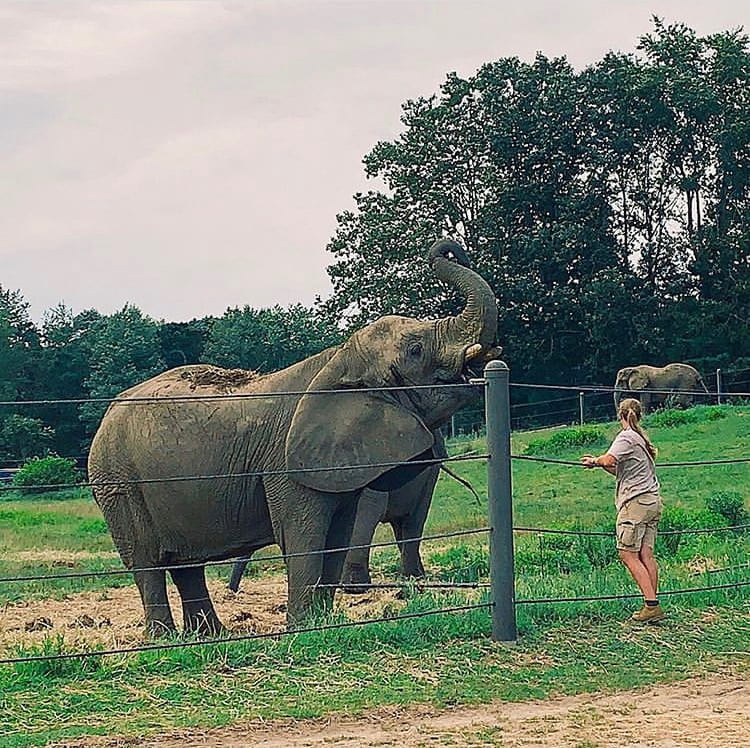 Why did you choose to pursue this particular experience?
Why did you choose to pursue this particular experience?
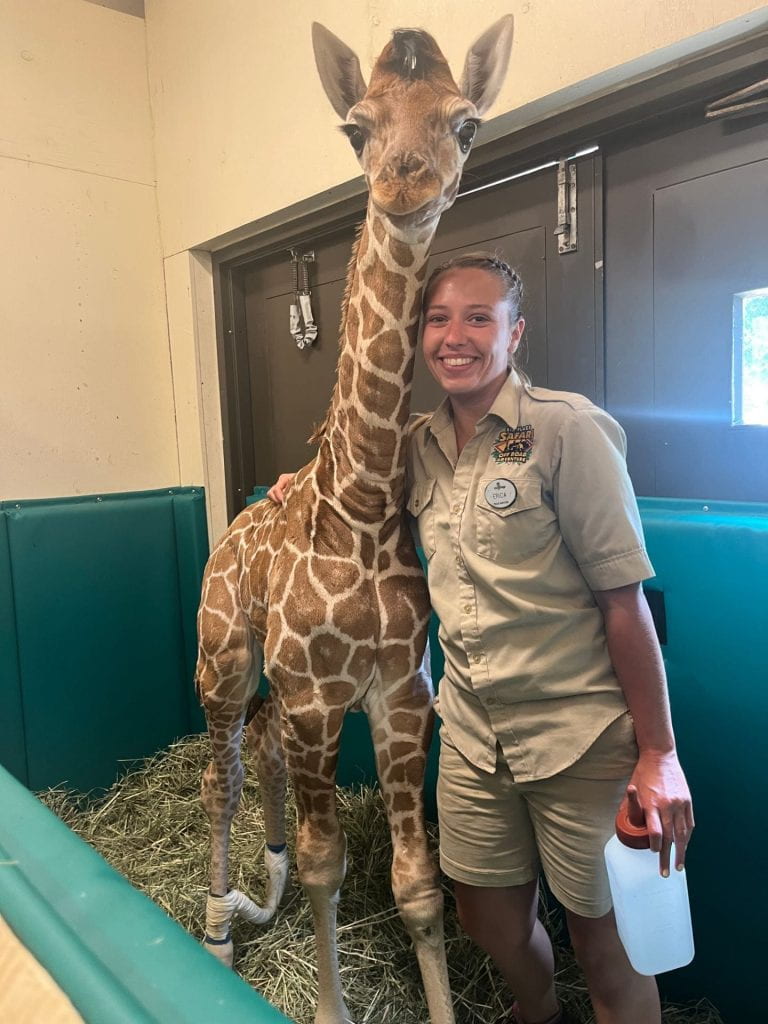 What species did you enjoy working with the most?
What species did you enjoy working with the most?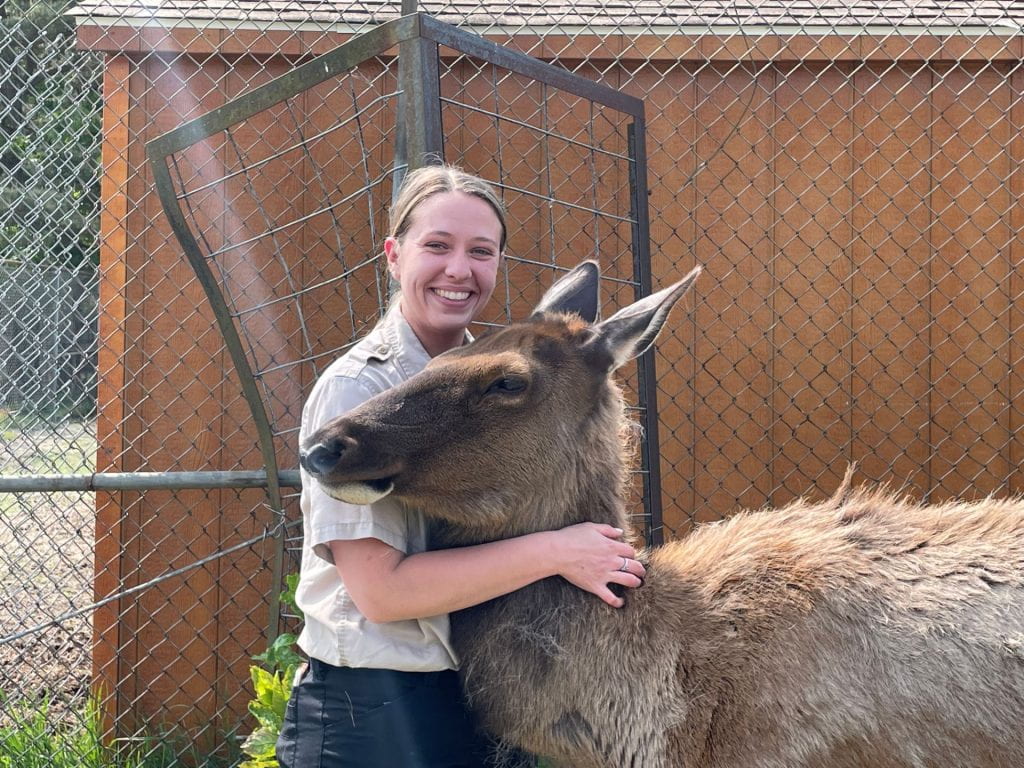
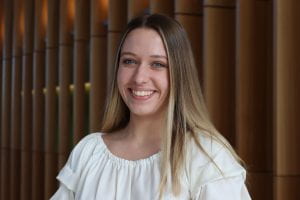



 Dr. Marinkovich is thrilled to come back to Cornell University and looks forward to seeing how it has changed since graduating in 2014. He is really looking forward to reconnecting with his vet school mentors, namely Dr. Noha Abou-Madi and Dr. Karen Kerns, who both play such an important role in the lives of students interested in pursuing zoological medicine. But, perhaps most notably, Dr. Marinkovich is eager to interact with vet students who share his drive to make a difference in the world through the lens of veterinary medicine. It was not that long ago that Dr. Marinkovich was an aspiring zoo vet like many of us, so he recognizes the stress and hard work that goes into actualizing that dream. Through his lecture, he hopes to convey excitement, ambition, and peace of mind, being a huge proponent for mental health in veterinary medicine. I felt so inspired by Dr. Marinkovich in just the short while I got to spend interviewing him for the WildLIFE Blog, an interaction I consider myself lucky to have had. Be sure to register for the 17th biannual Special Species Symposium so that you can relish in his journey towards becoming a Clinical Veterinarian at the San Diego Zoo, a story that will fill you with admiration, motivation, and awe.
Dr. Marinkovich is thrilled to come back to Cornell University and looks forward to seeing how it has changed since graduating in 2014. He is really looking forward to reconnecting with his vet school mentors, namely Dr. Noha Abou-Madi and Dr. Karen Kerns, who both play such an important role in the lives of students interested in pursuing zoological medicine. But, perhaps most notably, Dr. Marinkovich is eager to interact with vet students who share his drive to make a difference in the world through the lens of veterinary medicine. It was not that long ago that Dr. Marinkovich was an aspiring zoo vet like many of us, so he recognizes the stress and hard work that goes into actualizing that dream. Through his lecture, he hopes to convey excitement, ambition, and peace of mind, being a huge proponent for mental health in veterinary medicine. I felt so inspired by Dr. Marinkovich in just the short while I got to spend interviewing him for the WildLIFE Blog, an interaction I consider myself lucky to have had. Be sure to register for the 17th biannual Special Species Symposium so that you can relish in his journey towards becoming a Clinical Veterinarian at the San Diego Zoo, a story that will fill you with admiration, motivation, and awe.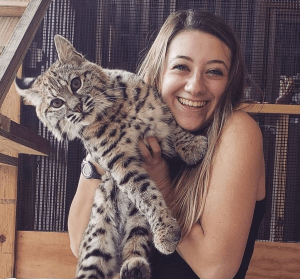
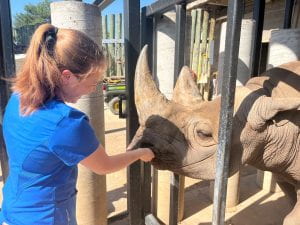
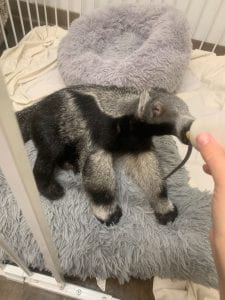
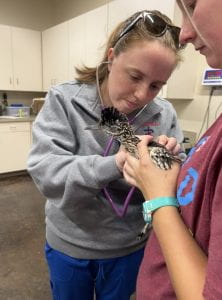
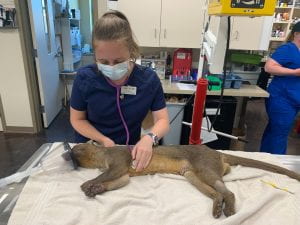
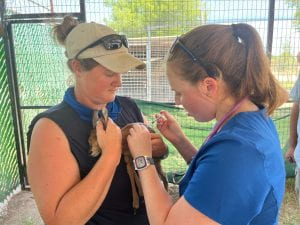
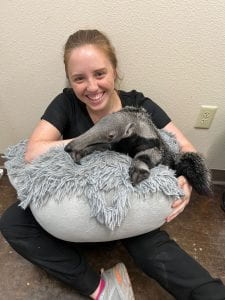
 Colleen Sorge, Class of 2024, is a Cornell DVM student from Long Island, NY. She obtained her undergraduate degree in Animal Science from Cornell University in 2020. She has a wide range of interests within the veterinary field, including both small animal and wildlife medicine.
Colleen Sorge, Class of 2024, is a Cornell DVM student from Long Island, NY. She obtained her undergraduate degree in Animal Science from Cornell University in 2020. She has a wide range of interests within the veterinary field, including both small animal and wildlife medicine. There was once a time in my life when I could only dream about performing a physical exam on a sedated jaguar in the Belizean jungle, but that dream, along with many others, became a reality as a student enrolled in Dr. Noha Abou-Madi’s International Experience in Wildlife Health and Conservation course. Cornell University College of Veterinary Medicine (CUCVM) has been partnered with the Belize Zoo since 2011 to provide state-of-the-art veterinary care while simultaneously fulfilling the dreams of adventurous veterinary students looking to hone their clinical skills. After having to cancel this trip multiple times throughout the COVID-19 pandemic, Dr. Noha Abou-Madi could not be more excited to offer this course once again to those with career goals involving wildlife and zoological medicine. In this course, students travel to the Belize Zoo where they stay for a week to gain hands-on experience with various mammals, birds, and reptiles native to Belize.
There was once a time in my life when I could only dream about performing a physical exam on a sedated jaguar in the Belizean jungle, but that dream, along with many others, became a reality as a student enrolled in Dr. Noha Abou-Madi’s International Experience in Wildlife Health and Conservation course. Cornell University College of Veterinary Medicine (CUCVM) has been partnered with the Belize Zoo since 2011 to provide state-of-the-art veterinary care while simultaneously fulfilling the dreams of adventurous veterinary students looking to hone their clinical skills. After having to cancel this trip multiple times throughout the COVID-19 pandemic, Dr. Noha Abou-Madi could not be more excited to offer this course once again to those with career goals involving wildlife and zoological medicine. In this course, students travel to the Belize Zoo where they stay for a week to gain hands-on experience with various mammals, birds, and reptiles native to Belize.
 The relationship between the Belize Zoo and CUCVM is one that not only fosters students’ education and clinical skills as they pertain to zoological medicine, but also as they pertain to conservation. The Belize Zoo is highly committed to the animals within their direct care, but they also care for those that live beyond their gates. Erin Guntrum ‘25 recalls a lecture that we received highlighting the integral role that zoos play in the realm of conservation in which we learned that the Belize zoo has been purchasing land to be utilized as wildlife corridors to once again connect wild populations that have been separated by human establishments. Members of the Belize zoo are very aware that the human population is expanding and so too is development, nonetheless they are trying their best to ensure that land exists for wildlife in the future.
The relationship between the Belize Zoo and CUCVM is one that not only fosters students’ education and clinical skills as they pertain to zoological medicine, but also as they pertain to conservation. The Belize Zoo is highly committed to the animals within their direct care, but they also care for those that live beyond their gates. Erin Guntrum ‘25 recalls a lecture that we received highlighting the integral role that zoos play in the realm of conservation in which we learned that the Belize zoo has been purchasing land to be utilized as wildlife corridors to once again connect wild populations that have been separated by human establishments. Members of the Belize zoo are very aware that the human population is expanding and so too is development, nonetheless they are trying their best to ensure that land exists for wildlife in the future.
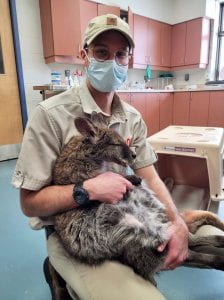 If Dr. Benjamin Jakobek decides to write a book, I will be first in line to buy it. As he tells me about some of the projects he’s been a part of, including capturing and collaring muskox in Nunavik and working to transport caribou to a protected environment, he is a reminder to all of us aspiring veterinarians that we will one day have the capability and arguably, the responsibility, to help protect wild animals and places around the world. After obtaining his DVM from Cornell University College of Veterinary Medicine in 2020, Dr. Jakobek completed a one-year small animal rotating internship at the University of Prince Edward Island. Now, he is a zoological medicine resident and a master’s student at the University of Montréal focusing on free-ranging wildlife health management. Though each day’s work is different, Dr. Jakobek divides the bulk of his time between the Granby Zoo, the Aquarium of Québec, the University of Montréal’s wildlife pathology service and raptor clinic, as well as federal and provincial wildlife agencies. His current program gives him the opportunity to hone his research and his clinical skills into something he calls “the opportunity of a lifetime.” This program has allowed him to work on research projects ranging from studying toxoplasmosis in endangered beluga whales to environmental interventions against Lyme disease, among many others.
If Dr. Benjamin Jakobek decides to write a book, I will be first in line to buy it. As he tells me about some of the projects he’s been a part of, including capturing and collaring muskox in Nunavik and working to transport caribou to a protected environment, he is a reminder to all of us aspiring veterinarians that we will one day have the capability and arguably, the responsibility, to help protect wild animals and places around the world. After obtaining his DVM from Cornell University College of Veterinary Medicine in 2020, Dr. Jakobek completed a one-year small animal rotating internship at the University of Prince Edward Island. Now, he is a zoological medicine resident and a master’s student at the University of Montréal focusing on free-ranging wildlife health management. Though each day’s work is different, Dr. Jakobek divides the bulk of his time between the Granby Zoo, the Aquarium of Québec, the University of Montréal’s wildlife pathology service and raptor clinic, as well as federal and provincial wildlife agencies. His current program gives him the opportunity to hone his research and his clinical skills into something he calls “the opportunity of a lifetime.” This program has allowed him to work on research projects ranging from studying toxoplasmosis in endangered beluga whales to environmental interventions against Lyme disease, among many others.

 Looking towards his future, Dr. Jakobek remains interested in both clinical medicine and research. He is particularly drawn to work in more remote areas of the world. “I think this appeals to me because it’s in those remote places that you find rich biodiversity and natural habitats often needing research and support for their protection.” Another highlight of his residency has been working alongside different community stakeholders to conserve habitats and safeguard wild species. He describes a particularly impactful experience transporting caribou alongside wildlife biologists, indigenous peoples, wildlife technicians, and veterinarians, all of whom wanted to ensure the survival of this particular caribou population, of which there were only seventeen individuals remaining. Of course, while his experiences during his residency have been rewarding, he is also frequently reminded of the progress still to be made. “This work [with caribou] shows how important it is to protect wildlife habitats while we still have them and value wildlife, while we have the great fortune to be able to share the planet with them.”
Looking towards his future, Dr. Jakobek remains interested in both clinical medicine and research. He is particularly drawn to work in more remote areas of the world. “I think this appeals to me because it’s in those remote places that you find rich biodiversity and natural habitats often needing research and support for their protection.” Another highlight of his residency has been working alongside different community stakeholders to conserve habitats and safeguard wild species. He describes a particularly impactful experience transporting caribou alongside wildlife biologists, indigenous peoples, wildlife technicians, and veterinarians, all of whom wanted to ensure the survival of this particular caribou population, of which there were only seventeen individuals remaining. Of course, while his experiences during his residency have been rewarding, he is also frequently reminded of the progress still to be made. “This work [with caribou] shows how important it is to protect wildlife habitats while we still have them and value wildlife, while we have the great fortune to be able to share the planet with them.”
 Colleen Sorge, Class of 2024, is a Cornell DVM student from Long Island, NY. She obtained her undergraduate degree in Animal Science from Cornell University in 2020. She has a wide range of interests within the veterinary field, including both small animal and wildlife medicine.
Colleen Sorge, Class of 2024, is a Cornell DVM student from Long Island, NY. She obtained her undergraduate degree in Animal Science from Cornell University in 2020. She has a wide range of interests within the veterinary field, including both small animal and wildlife medicine.
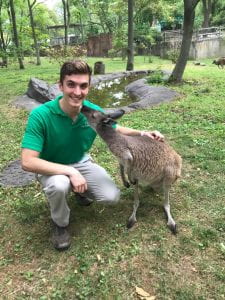
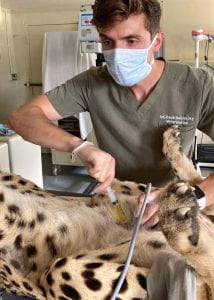
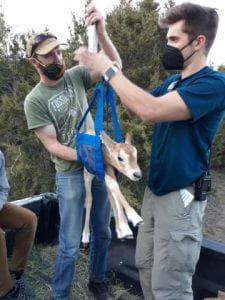
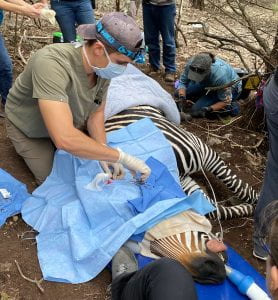
 Dr. Matt Marinkovich always had a passion for wildlife but was initially unsure as to what career path might suit him best. “I always knew I wanted to do something with wildlife or something conservation related, but it took a little while to find what that niche was, whether PhD or vet school. I had a couple experiences at SeaWorld San Diego when I was in undergrad and at the National History Museum in Santa Barbara working with the Marine Mammal Stranding Network that led me to really feel like veterinary medicine was the route to go.” After taking 3 gap years, he began his time at Cornell Vet, going on to complete his DVM in 2014.
Dr. Matt Marinkovich always had a passion for wildlife but was initially unsure as to what career path might suit him best. “I always knew I wanted to do something with wildlife or something conservation related, but it took a little while to find what that niche was, whether PhD or vet school. I had a couple experiences at SeaWorld San Diego when I was in undergrad and at the National History Museum in Santa Barbara working with the Marine Mammal Stranding Network that led me to really feel like veterinary medicine was the route to go.” After taking 3 gap years, he began his time at Cornell Vet, going on to complete his DVM in 2014. While well aware that the field of zoological medicine is competitive, Dr. Marinkovich has a refreshing viewpoint. “I think really just focusing on becoming the best vet you can be is the number one step. I think what we look for in terms of a good resident is someone who has a really good foundation in veterinary medicine, and that involves all species. The next time you have to help pull a calf, it may be an exotic bovid rather than a dairy cow.” His perspective, he says, is largely informed by his respect for mental health. “I’m a huge proponent of mental health and being happy with what you’re doing and enjoying each step of the journey. I think you need to take each step and try to get the most out of each experience for what it is. It’s great if zoo residency or working a zoo job works out, but if not, being a vet is an awesome job and you still have that to be fulfilled by. You have to try to not let the quest for that elusive zoo resident position to be the end all and be all of what it means to be fulfilled in this field. Developing your skill sets, really focusing on your own mental health, and who you are as a vet and as a person is going to set you up for success.”
While well aware that the field of zoological medicine is competitive, Dr. Marinkovich has a refreshing viewpoint. “I think really just focusing on becoming the best vet you can be is the number one step. I think what we look for in terms of a good resident is someone who has a really good foundation in veterinary medicine, and that involves all species. The next time you have to help pull a calf, it may be an exotic bovid rather than a dairy cow.” His perspective, he says, is largely informed by his respect for mental health. “I’m a huge proponent of mental health and being happy with what you’re doing and enjoying each step of the journey. I think you need to take each step and try to get the most out of each experience for what it is. It’s great if zoo residency or working a zoo job works out, but if not, being a vet is an awesome job and you still have that to be fulfilled by. You have to try to not let the quest for that elusive zoo resident position to be the end all and be all of what it means to be fulfilled in this field. Developing your skill sets, really focusing on your own mental health, and who you are as a vet and as a person is going to set you up for success.” 


 Carolina Baquerizo, Class of 2024, received her BS in Biological Science from Florida State University. She began volunteering at Zoo Miami when she was 15 and has held multiple zoological internships since then. She aspires to become a zoo veterinarian as a way to participate in
Carolina Baquerizo, Class of 2024, received her BS in Biological Science from Florida State University. She began volunteering at Zoo Miami when she was 15 and has held multiple zoological internships since then. She aspires to become a zoo veterinarian as a way to participate in 
 For students looking to enter the increasingly competitive field, Dr. Radcliffe’s first suggestion is to capitalize on the opportunities we have here at Cornell Vet. “I think there’s a lot of expertise here at Cornell and there’s a lot of opportunities.” These include Engaged Cornell, Expanding Horizons, and a myriad of courses aimed at students interested in pursuing careers in zoo, wildlife, and exotics medicine. Dr. Radcliffe teaches a 3-part course called Conservation with Communities for One Health, which reflects the multi-disciplinary mindset crucial to effective conservation work. Both undergraduate and veterinary students are able to take this course, and a subset of them travel in teams to field sites in the Congo, Uganda, and Indonesia to participate in projects with institutions that Dr. Radcliffe has built relationships with over the years, including the Jane Goodall Institute and WWF-Indonesia. Coursework aside, Dr. Radcliffe encourages students to take advantage of networking opportunities and to pursue externships that excite them.
For students looking to enter the increasingly competitive field, Dr. Radcliffe’s first suggestion is to capitalize on the opportunities we have here at Cornell Vet. “I think there’s a lot of expertise here at Cornell and there’s a lot of opportunities.” These include Engaged Cornell, Expanding Horizons, and a myriad of courses aimed at students interested in pursuing careers in zoo, wildlife, and exotics medicine. Dr. Radcliffe teaches a 3-part course called Conservation with Communities for One Health, which reflects the multi-disciplinary mindset crucial to effective conservation work. Both undergraduate and veterinary students are able to take this course, and a subset of them travel in teams to field sites in the Congo, Uganda, and Indonesia to participate in projects with institutions that Dr. Radcliffe has built relationships with over the years, including the Jane Goodall Institute and WWF-Indonesia. Coursework aside, Dr. Radcliffe encourages students to take advantage of networking opportunities and to pursue externships that excite them.